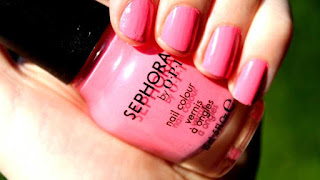"Seeing pink elephants" is a euphemism for drunken hallucination caused by alcoholic hallucinosis or delirium tremens. The term dates back to at least the early 20th century, emerging from earlier idioms about snakes and other creatures. An alcoholic character in Jack London's 1913 novel John Barleycorn is said to hallucinate "blue mice and pink elephants".
Video Seeing pink elephants
History of the euphemism
For many decades before "pink elephant" became the standard drunken hallucination, people were known to "see snakes" or "see snakes in their boots." Beginning in about 1889, and throughout the 1890s, writers made increasingly elaborate modifications to the standard "snakes" idiom. They changed the animal to rats, monkeys, giraffes, hippopotamuses or elephants - or combinations thereof; and added color - blue, red, green, pink - and many combinations thereof.
In 1896, for example, in what may be the earliest recorded example of a (partially) pink elephant, one of Henry Wallace Phillips' "Fables of our Times" referred to a drunken man seeing a "pink and green elephant and the feathered hippopotamus." In 1897, a humorous notice about a play entitled "The Blue Monkey," noted that, "We have seen it. Also the pink elephant with the orange trunk and the yellow giraffe with green trimmings. Also other things."
An early literary use of the term is by Jack London in 1913, who describes one kind of alcoholic, in the autobiographical John Barleycorn:
There are, broadly speaking, two types of drinkers. There is the man whom we all know, stupid, unimaginative, whose brain is bitten numbly by numb maggots; who walks generously with wide-spread, tentative legs, falls frequently in the gutter, and who sees, in the extremity of his ecstasy, blue mice and pink elephants. He is the type that gives rise to the jokes in the funny papers.
"Pink elephants" became the dominant animal of drunken-hallucination choice by about 1905, although other animals and other colors were still regularly invoked. "Seeing snakes" or "seeing snakes in one's boots" was in regular use into the 1920s.
A well-known reference to pink elephants occurs in the 1941 Disney animated film Dumbo. Having taken a drink of water from a bucket spiked with champagne, Dumbo begins to hallucinate singing and dancing elephants in a segment known as "Pink Elephants on Parade".
Pink elephants do exist in nature, as it is possible for albino elephants to be pink, as well as white.
Maps Seeing pink elephants
Product references
The association between pink elephants and alcohol is reflected in the name of various alcoholic drinks. There are various cocktails called "Pink Elephant", and The Huyghe Brewery put a pink elephant on the label of its Delirium Tremens beer.
Other meanings
In 2008, Republican vice-presidential candidate Sarah Palin used the phrase "pink elephants" to refer to conservative women such as herself, Carly Fiorina, Sue Lowden and Jane Norton (referencing the elephant being the symbol of the Republican Party and pink being a stereotypical feminine color).
References
Source of article : Wikipedia

